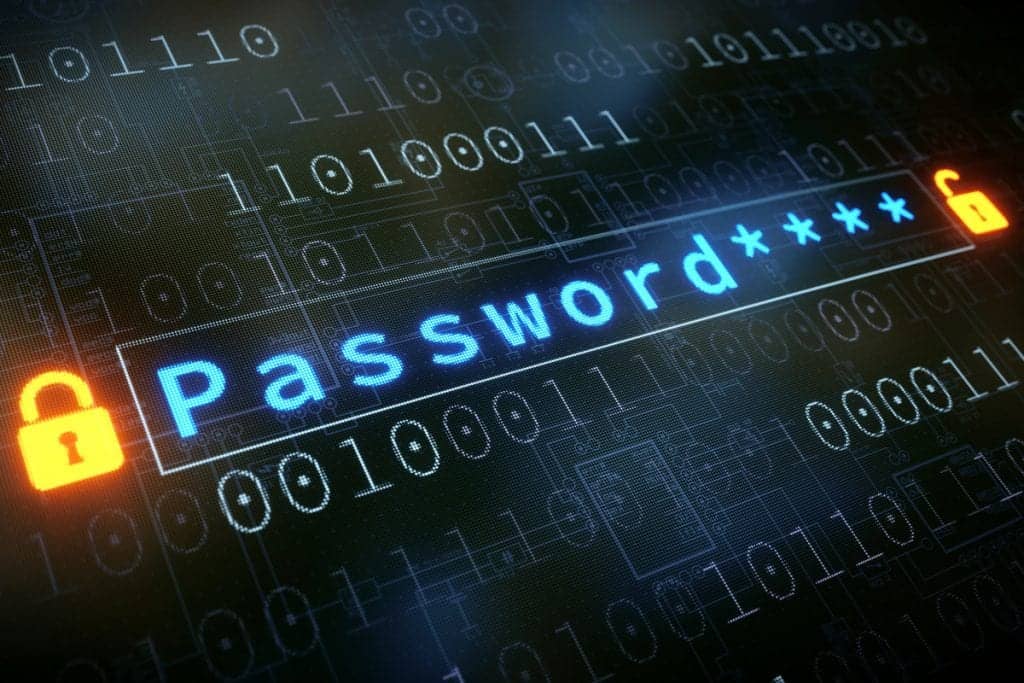A single security breach can lead to devastating consequences – compromised customer data, financial losses, operational disruptions, and irreparable damage to your reputation. Despite these risks, many businesses remain vulnerable due to unidentified security gaps and outdated protective measures.
A comprehensive cyber security audit gives you the clarity you need to spot weaknesses, prioritize risks, and take control of your digital defenses before attackers do. In this guide, we’ll show you exactly how it works—and why your business can’t afford to delay
Our team of experts provides comprehensive cybersecurity support to help your business identify vulnerabilities and implement robust security solutions.
What is auditing in cyber security?
A cybersecurity audit is a structured, systematic evaluation of your organization’s IT infrastructure, policies, and security controls to identify vulnerabilities, verify compliance with regulations, and ensure adequate protection of digital assets. Unlike assessments or penetration testing, audits provide a comprehensive review against established frameworks.
💡 While assessments focus on overall security posture and penetration tests actively attempt to exploit vulnerabilities, audits specifically verify compliance with security standards and policies, making them essential for regulatory requirements—especially when aligned with trusted frameworks like the NIST Cybersecurity Framework or guidance from CISA’s Cybersecurity Essentials.
Why cybersecurity audits matter for every business
Many small and medium businesses mistakenly believe they’re too small to be targeted by cybercriminals. However, SMBs are increasingly attractive targets precisely because they often lack robust security measures.
Regular cybersecurity audits deliver important benefits:
- Protecting sensitive customer and business data
- Reducing expensive downtime and recovery costs
- Improving compliance with industry regulations
- Building customer trust in your data handling practices
- Strengthening cyber insurance eligibility and lowering premiums
Hypothetical scenario: Imagine a growing accounting firm that handles sensitive financial information for dozens of clients. Without regular security audits, they might not discover that their client portal has critical misconfiguration issues, potentially exposing tax documents and financial records. By the time they discover the breach, significant damage to their reputation has already occurred.
💡 Many cyber insurance providers now require proof of regular security audits before issuing or renewing policies, making these evaluations essential for risk management.
Want to protect your business and meet insurance requirements before it’s too late? Contact us to schedule a cybersecurity audit and secure what matters most.
Cyber security audit and compliance
Cybersecurity audits play a vital role in meeting regulatory requirements across various industries. Different compliance frameworks mandate specific security controls and regular verification through audits. If your business collects data from EU customers or users, cybersecurity audits can also support compliance with international standards like the GDPR.
⚖️ Failing to comply with industry-specific regulations can result in severe penalties, legal consequences, and loss of customer trust.
| Compliance Framework | Industry | Required Audit Requirements |
|---|---|---|
| HIPAA | Healthcare | Annual security risk assessment, technical and physical safeguards verification |
| PCI DSS | Retail, E-commerce | Quarterly vulnerability scans, annual penetration testing |
| SOC 2 | SaaS, Cloud Services | Annual Type 1 (point-in-time) or Type 2 (period of time) audits |
| CMMC | Defense Contractors | Assessment by certified third-party assessor |
| GDPR | Any handling EU data | Data protection impact assessments, processing audits |
Information security auditing: Key areas to cover
A comprehensive cybersecurity audit should examine multiple layers of your cyber incident response plan infrastructure. Here are the essential components that we verify during a thorough evaluation:
- Network security: Firewall configurations, intrusion detection, and segmentation
- Access controls: User privileges, password policies, and multi-factor authentication
- System and endpoint protections: Antivirus, anti-malware, and endpoint security solutions
- Physical security: Server room access, device security, and environmental controls
- Patch management: Software updates, security patches, and update procedures
- Backup and disaster recovery: Backup frequency, storage security, and recovery testing
- Employee training: Security awareness programs and phishing simulation results
- Vendor management: Third-party access controls and service provider security
At CMIT Solutions, our proactive cybersecurity approach helps prevent hidden vulnerabilities and policy gaps from occurring in the first place, reducing the stress and surprises during formal audits.
Cyber security audit example: what it might look like
Here’s how a typical cybersecurity audit might unfold for a growing financial services firm preparing for SOC 2 compliance:
Phase 1: The audit team begins by reviewing the company’s documented security policies and interviewing key stakeholders about implementation practices.
Phase 2: Technical scanning and testing reveal that several former employees still have active user accounts in critical systems, creating significant access control vulnerabilities. This highlights a common issue in many businesses—how does human error relate to security risks?
⚠️ The audit discovers an unencrypted database containing client financial information, representing a serious compliance violation that could result in regulatory penalties.
Phase 3: The firm works with their IT provider to remediate findings by implementing automated user deprovisioning, encrypting sensitive data, and enhancing network monitoring.
Phase 4: A follow-up audit confirms that remediation efforts have been successful, documenting the improvements for compliance certification.
This process not only helped the company achieve compliance but also significantly strengthened their overall security posture against potential threats.
How to prepare for a cybersecurity audit
Following a methodical approach to audit preparation can significantly reduce stress and improve outcomes. Here’s how to get your business ready:
- Assign responsibilities: Designate a team leader and involve representatives from IT, compliance, and executive leadership
- Define scope and goals: Clarify which systems, processes, and regulations will be evaluated
- Update asset inventory: Document all hardware, software, data storage locations, and third-party services
- Review policies and controls: Ensure security policies are documented, up-to-date, and aligned with compliance requirements
- Test backups and recovery systems: Verify that data backup processes work as expected
- Schedule an internal walkthrough: Conduct a preliminary self-assessment to identify obvious issues
- Engage a trusted IT provider: Partner with our security experts who understand your industry’s compliance landscape
📌 Even without regulatory pressure, consider implementing this process annually as a cybersecurity best practice. Regular internal reviews can identify weaknesses before they become serious vulnerabilities.
Want help preparing for your next cybersecurity audit? Contact us and let our experts guide you through every step.
Cybersecurity audit checklist for SMBs
Use this checklist to conduct a preliminary evaluation of your security readiness before a formal audit:
| Security Area | Readiness Assessment |
|---|---|
| Password Management |
|
| System Updates |
|
| Access Controls |
|
| Multi-Factor Authentication |
|
| Data Backup |
|
| Incident Response |
|
💡 If you’re just starting out or want a quick primer, check out our cybersecurity checklist for 16 simple ways to boost protection across your business.
How often should a business conduct a cybersecurity audit?
Most businesses should conduct a comprehensive cybersecurity audit at least annually, with more frequent evaluations based on industry, size, and risk profile. Healthcare organizations handling protected health information should perform quarterly audits, while retail businesses should conduct audits before peak seasons.
According to the National Institute of Standards and Technology (NIST), organizations should supplement annual comprehensive audits with quarterly targeted reviews following significant system changes, software deployments, or business restructuring.
For highly regulated industries or those handling sensitive data, consider layering continuous monitoring with quarterly focused assessments and annual comprehensive audits to maintain optimal security posture.
Cybersecurity audit best practices
Implementing these best practices will help ensure your cybersecurity audits deliver maximum value:
- Don’t wait for a breach: Schedule regular audits proactively rather than reactively after an incident occurs
- Document everything: Create detailed records of all findings, even seemingly minor issues that might indicate larger problems
- Prioritize remediation: Address critical vulnerabilities immediately while developing a timeline for less urgent fixes
- Test continuously: Verify that security controls work effectively throughout the year, not just during audit periods
- Educate your team: Ensure staff understand compliance requirements and their role in maintaining security
- Maintain independence: Consider using external auditors who can provide unbiased evaluations of your security
- Learn from results: Use each audit as a learning opportunity to strengthen your overall security program
⚠️ The most common audit mistake is treating it as a one-time compliance exercise rather than an ongoing security improvement process.
Get audit-ready with CMIT Solutions
Cybersecurity audits are essential tools for protecting your business, ensuring compliance, and building customer trust. However, you don’t have to navigate this complex process alone.
Our team at CMIT Solutions brings years of experience helping businesses prepare for and successfully complete cybersecurity audits across various industries and compliance frameworks. We tailor our approach to your specific business needs, focusing on practical solutions that enhance security while minimizing disruption to your operations.
✔️ With CMIT Solutions as your partner, you’ll benefit from personalized support, industry-specific compliance expertise, and proven security strategies that protect your business from evolving threats.
Ready to strengthen your security posture and prepare for your next audit? Call us today at (800) 399-2648 or online to schedule a consultation with our cybersecurity experts.
FAQs
What should I do if my business has never had a cybersecurity audit before?
Start with a preliminary security assessment to establish your baseline security posture before moving to a full audit. Begin by documenting your IT assets, reviewing existing security policies, and identifying regulatory requirements for your industry.
For businesses new to cybersecurity audits, we recommend working with an experienced IT provider who can guide you through the process, identify critical vulnerabilities, and help prioritize remediation efforts. The first audit will serve as a learning experience and foundation for your ongoing security program.
How can I tell if my current IT setup would pass an audit?
To evaluate your audit readiness, compare your current security measures against relevant compliance frameworks and industry standards. Look for gaps in essential areas like access control, data encryption, network security, and incident response capabilities.
Warning signs that your systems might fail an audit include outdated software, lack of multi-factor authentication, poor password practices, and inadequate documentation of security policies. Consider conducting a self-assessment using our SMB checklist above or engaging a professional for a pre-audit evaluation.
What’s the risk of not performing regular cybersecurity audits?
Skipping regular cybersecurity audits leaves your business vulnerable to undetected security gaps that can lead to data breaches, system compromises, and operational disruptions.
Beyond the immediate security risks, businesses that neglect audits may face regulatory penalties, increased cyber insurance premiums or denial of coverage, and loss of customer trust. Many businesses that experience breaches discover they had longstanding vulnerabilities that could have been identified and addressed through routine audits.
Can a failed audit hurt my business or lead to penalties?
A failed internal security audit itself won’t result in penalties if you address the issues promptly. In fact, discovering and fixing vulnerabilities before a breach occurs demonstrates proper due diligence in protecting sensitive data.
However, failing a formal compliance audit required by regulations like HIPAA, PCI DSS, or SOC 2 can have serious consequences, including regulatory fines, loss of business opportunities, and damaged reputation. The key is to view failed audit findings as opportunities for improvement rather than failures, and to demonstrate progress in addressing identified issues.
How can CMIT Solutions help me get ready for a cybersecurity audit?
CMIT Solutions provides comprehensive audit preparation services, including preliminary assessments, gap analysis, remediation support, and documentation assistance. Our team works directly with your staff to understand your business requirements and develop tailored security solutions.
We help simplify the complex audit process by translating technical requirements into practical actions, prioritizing critical vulnerabilities, and implementing sustainable security improvements. With our support, you can approach your next cybersecurity audit with confidence, knowing your systems are properly protected and compliance-ready.






